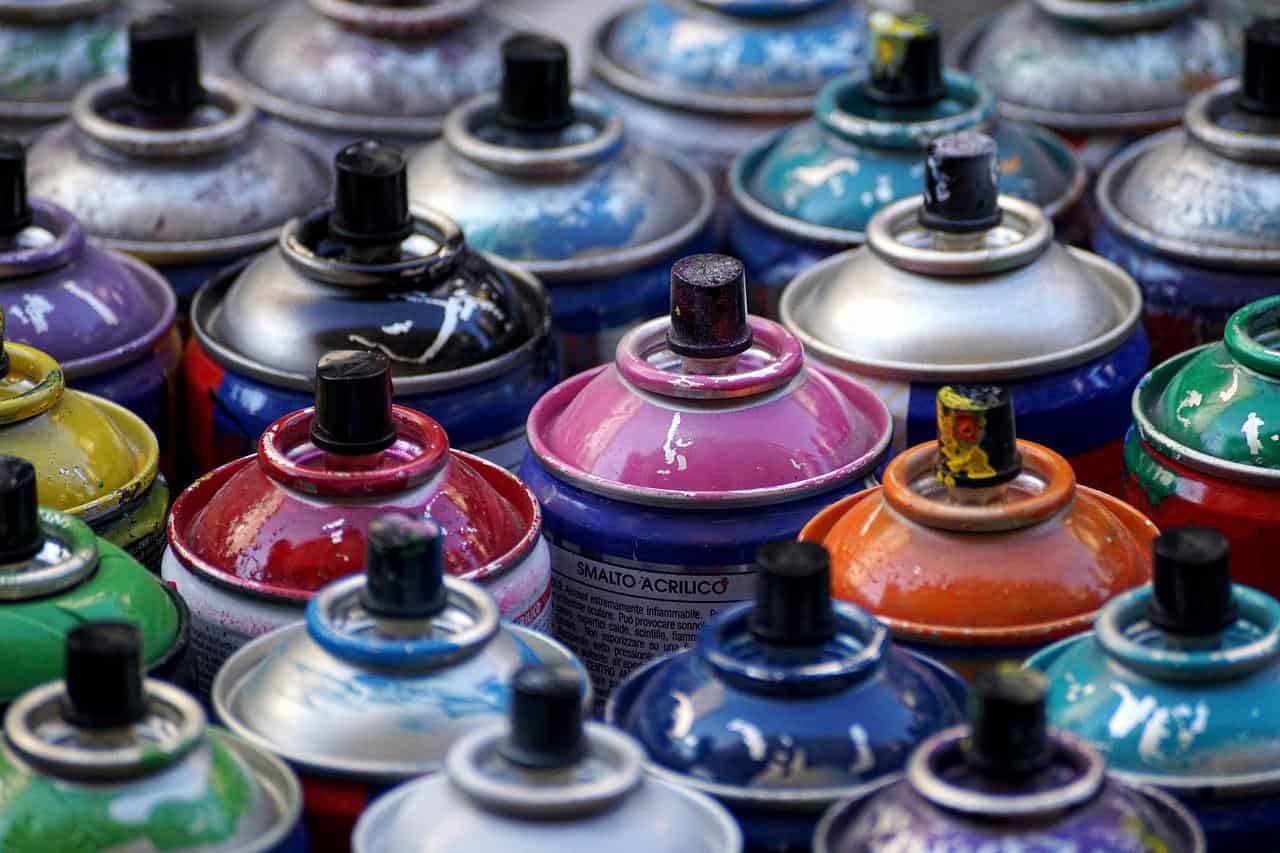Home improvement projects can be very enjoyable, especially if you’re adding a bit of color to your life through spray painting. The question is, how long can spray paint stay toxic before it becomes safe to be around?
Spray paint remains toxic until it is fully dry. It usually takes up to three or four days for the paint to become non-toxic if you spray a 15-square-meter room. If the paint is dry to the touch, double-check that it is no longer harmful by ensuring no strong odor permeates the room.
Although we know the average time it will take for spray paint to become non-toxic, there are still a lot of elements that can increase or decrease that time. To help you approximate how long it might take for your own personal projects to dry, let’s look at the toxicity of spray paint in detail.
How long is spray paint toxic? (In detail)
Although the average time spray paint takes to dry in a room is three days, it depends on factors like how much you spray in any area and the type of paint you use. For example, water-based spray paint dries more quickly than any spray paint that uses oil due to water being able to evaporate quicker than oil.
If you use oil-based paint and you only use one coat, an entire room may potentially become non-toxic after only two days. For small furniture, the paint should become non-toxic in only one day since it can dry thoroughly in that time.
The toxicity of spray paint
A lot of spray paint that people use professionally does contain what we know as volatile organic compounds (VOCs) that release into the air when you use them. A few types of VOCs include benzene, xylene, and acetone, and all of these compounds can be very harmful to your body.
For example, benzene can irritate your skin and eyes. It can also lead to blisters and, in rare cases, can prove to be deadly. Xylene is also toxic and leads to issues such as dizziness and vomiting. Lastly, acetone inhalation can cause eventual unconsciousness, slurred speech, and more.
Health risks of spray paint for the human body
There are two main ways spray paint can be toxic for humans. One way is through touch, and the other is through direct inhalation of the spray paint fumes. Working with spray paint long enough without taking the proper precautions can lead to long-term health problems relating to your respiratory system.
Skin contact
When your skin comes into contact with spray paint, it can lead to redness and irritation. In some cases, it can also result in mild burns if you have more sensitive skin or use spray paint with harsher chemicals.
Inhalation
Inhaling spray paint is very harmful to your lungs. In the short term, it can result in migraines, anxiety, and muscle fatigue. Inhaling can even cause dizziness and irritation in your eyes and throat. Frequent exposure to acetone can also result in you getting conditions such as dermatitis.
How to remove spray paint from your skin
If you come into direct contact with spray paint, you must try to wash it off as soon as possible. Depending on the brand of paint you use, it can be more difficult as they have different formulas.
Try washing off the paint with standard soap and water. Use bar soap as you would be able to get into the crevices of your hands quickly. To remove the paint, run the tap and scrub your hands. To make it easier, you can also use a brush to remove all of the chemicals.
Another method to remove spray paint before it can lead to detrimental effects is to use toothpaste. Toothpaste is effective since it can help break down the chemicals and make it easier for you to get rid of the paint.
Tips for spray paint safety
You must take a lot of precautions when using spray paint indoors, especially in a room where there are fewer places for the fumes and odor to escape. Ensure that you can provide good ventilation during both the time it takes to paint, and the time it takes for the paint to dry.
Wear a respirator mask
You should make sure to wear a high-grade mask, particularly a paint respirator mask that can fit securely on your face. Such masks protect you from the harmful gases in spray paint.
One example is the 3M spray paint respirator that provides protection against organic gases. It also helps to protect against oil-based vapors while still enabling you to breathe easily due to the low resistance exhalation valve.
Spray paint outside
Another tip is that if you want to paint smaller items or movable furniture, then you should make an effort to move the things outside. Try to create a spray painting station in the backyard on top of a large sheet to prevent paint from getting on the greenery.
Even when you’re outside, do not use spray paint when it is noticeably windy, as it can easily get into your clothes, eyes, plants, and maybe your neighbor’s land. Ensure that you are considerate and inform your direct neighbors in advance if you plan to spray many items.

